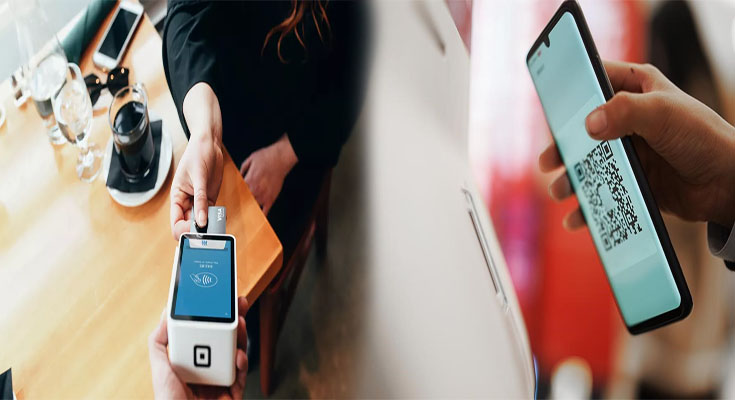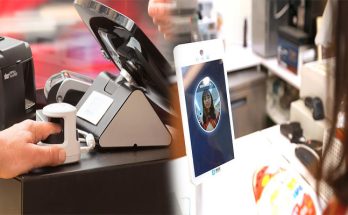We live in an increasingly digital world, and the changes that have taken place in recent years are staggering. The internet has become a part of everyday life for consumers and businesses alike, with online shopping and social media becoming more popular than ever before. We’ve seen huge advances in technology, which has improved our lives by automating mundane tasks (such as booking flights) and creating new ones (such as streaming services). All this change means that companies must adapt their business strategies to stay relevant—and payment terminals are no exception.
The future of payments is digital and mobile.
The future of payments is digital and mobile. The days of cash are numbered, and we’re seeing the rise of contactless payments as well as mobile payment solutions like Apple Pay, Samsung Pay and Android Pay. These services have been introduced to make it easier for you to pay for things quickly–but they also offer an opportunity for merchants who want to differentiate themselves from their competitors by offering better customer experiences that put customers first.
In order for businesses around the world to compete on this level playing field in terms of ease-of-use when it comes to paying at checkout counters (or anywhere else), there needs to be one standard way that all people can use their phones or cards wherever they are in order for them not only stay competitive but thrive amidst increasing competition within markets where products may be similar yet slightly different enough so that consumers choose one over another based solely upon how easy it will be get through checkout lines without having any problems whatsoever during each visit…
Customers want to pay quickly and easily.
You want to pay quickly and easily, right?
It’s no surprise that customers want to pay quickly and easily. That’s why you’ve got your smartphone in hand, ready to whip out at any moment. And while there are plenty of ways to pay online or through an app, sometimes it’s just easier (and more convenient) for people to use their credit card at a terminal in person. The problem is that most payment terminals aren’t designed with today’s customer needs in mind–they’re old-fashioned relics from another era when things were simpler: they only accept magnetic stripe cards; they’re expensive; they take up too much space on counters; and they take forever just getting set up!
Businesses need the right tools to compete in the modern world.
Businesses today are competing in a global market, and they need to invest in their employees. Payment terminals are an essential tool for businesses to provide customers with the best experience possible.
Businesses also need to invest in payment terminals because they’re crucial for business success. Payment terminals help you cut costs by reducing the time it takes to process payments and increase efficiency while reducing errors that could lead to refunds or chargebacks (which cost money).
Payment terminals have a huge role to play in enabling this shift from cash to card and mobile.
Payment terminals are one of the most important tools for retailers. They enable faster transactions and more efficient operations, while also playing a critical role in the checkout process.
The shift from cash to card and mobile is happening at an unprecedented rate, with consumers moving away from using physical currency every day. This means that payment terminals have to adapt as well–or else risk being left behind by your customers’ changing behavior.
We’ve identified four key areas where we believe the next generation of payment terminals must excel.
We’ve identified four key areas where we believe the next generation of payment terminals must excel:
- Speed and accuracy of transactions. It’s no secret that consumers are increasingly impatient, so you need to be able to process payments quickly and accurately. This means not only minimizing the number of steps it takes for them to complete their purchase but also making sure they can use your terminal with ease.
- Security. Customers want assurance that their personal data is safe when they use your product, so you’ll need a strong system for protecting sensitive information like credit card numbers and passwords as well as other sensitive data such as drivers license numbers or even Social Security numbers (SSNs).
- Usability/integration with other devices like smartphones or tablets, which many customers now use instead of PCs or laptops because they’re easier to carry around from place-to-place than desktop computers!
Today, these four areas represent the biggest issues faced by retailers and their customers, but as technology advances so will payment terminals’ capabilities.
While there are many issues with today’s payment terminals, this is just the beginning of new technology being introduced into the world of payment processing. As technology continues to advance, so will your business’ payment terminal needs.
As more people adopt contactless payments, it’s important that you have a terminal with the ability to process these transactions quickly and efficiently. You also need a device that provides an exceptional customer experience–one that allows users to pay quickly while maintaining security standards required by companies like Visa or Mastercard.
To stay relevant in this rapidly changing environment, businesses need to invest in the right tools for their employees.
To stay relevant in this rapidly changing environment, businesses need to invest in the right tools for their employees.
Businesses that don’t adapt will fall behind the competition and become obsolete. It’s not easy to change your business model or process–but it’s something you must do if you want your company to survive.
If you’re looking for a way to improve how your employees work together and communicate more effectively with customers, then look no further than Poynting Systems’ payment terminals….
We believe that the next generation of payment terminals will be able to solve many of the problems faced by businesses today. They will be smarter, faster and more flexible than their predecessors and will help retailers stay competitive in a changing environment.





